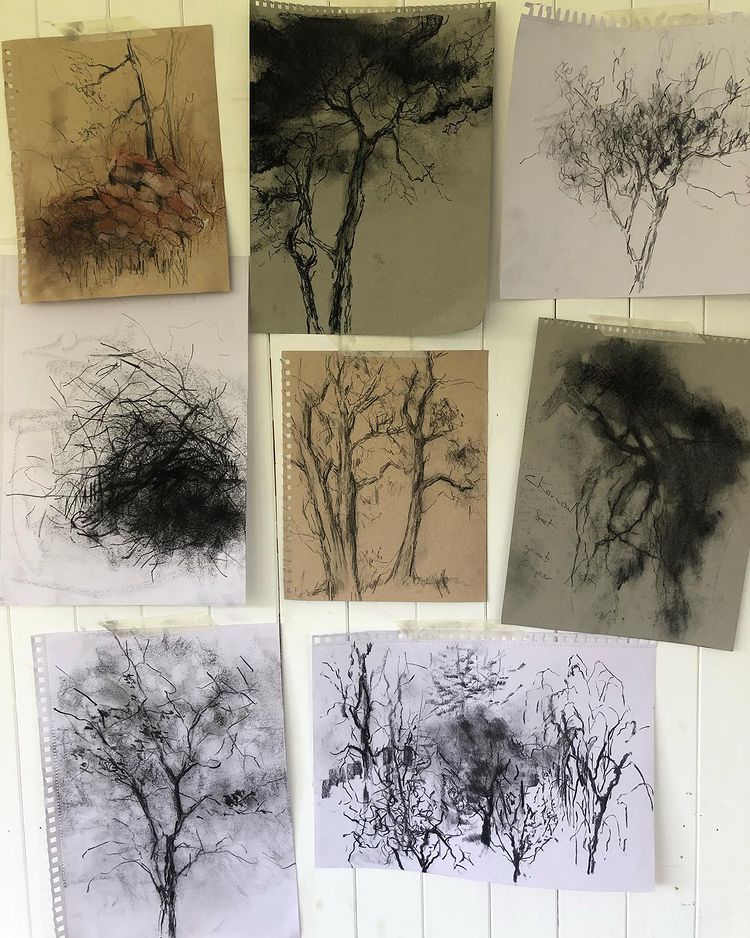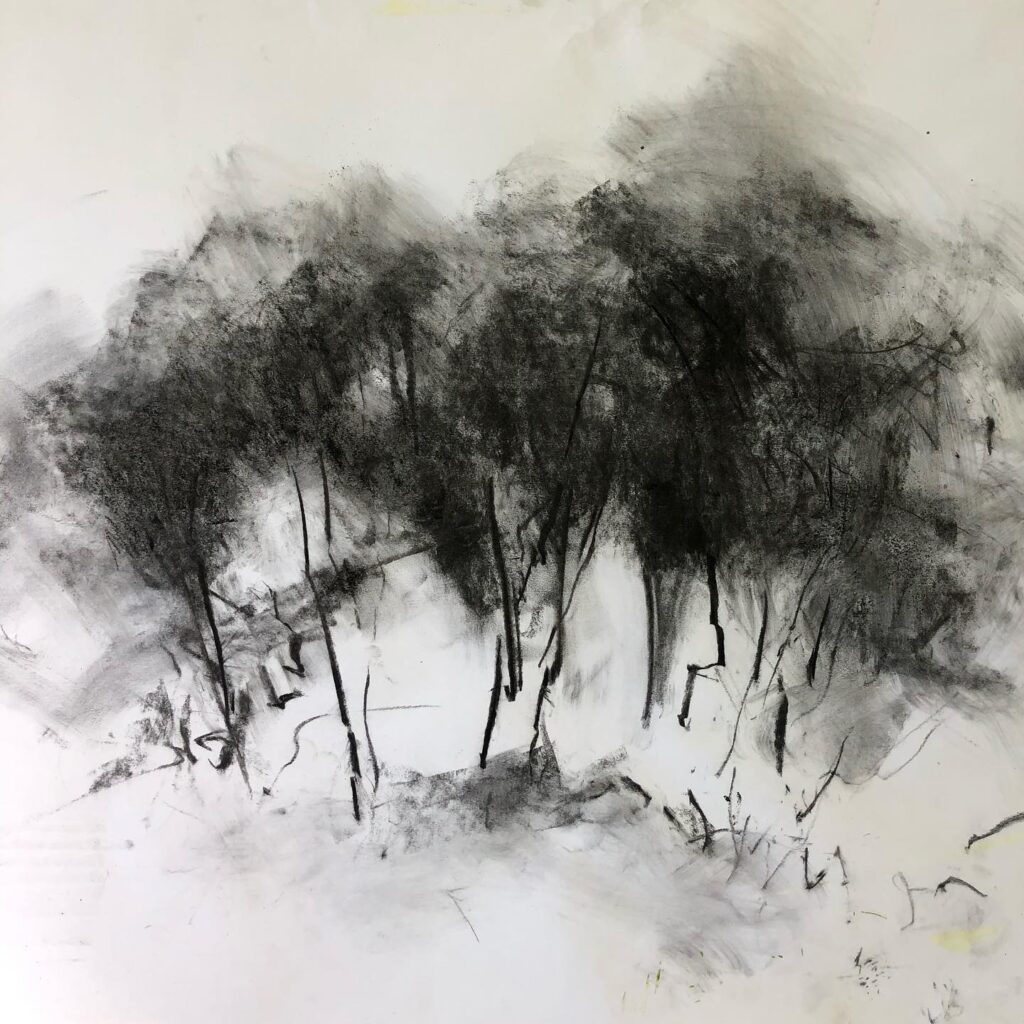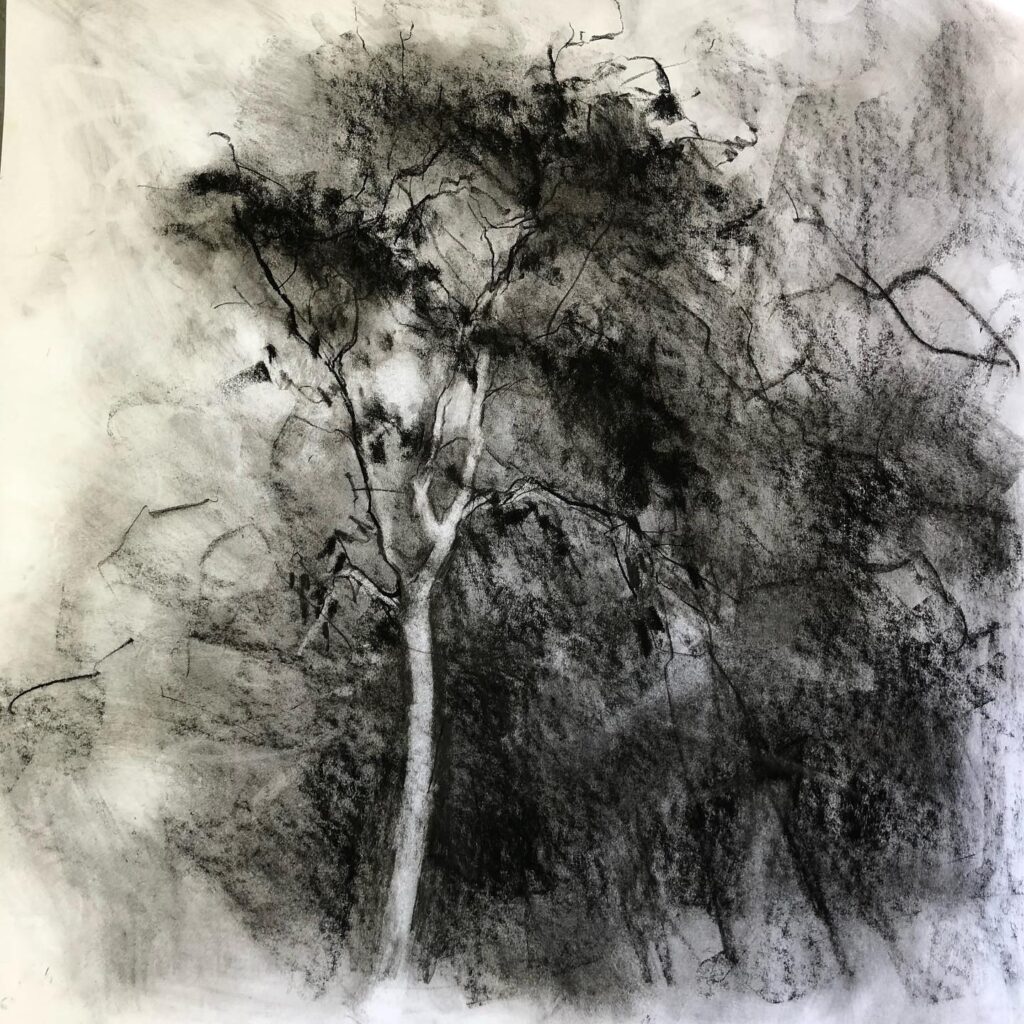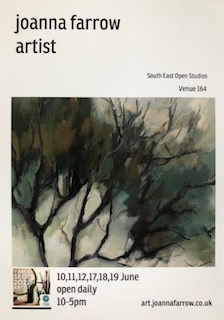[ad_1]
Joanna Farrow is a British artist, based in East Sussex. Drawing is core to Joanna’s work whether it’s out and about with a sketchbook, or experimenting in the studio with a view to sizing up ideas to a larger scale. Joanna works primarily on landscapes, notably trees, and draws inspiration from the beauty of her rural surroundings. In this post Joanna shares her top tips for a successful drawing.
My Tips for Successful Drawing

Mark making techniques
- Don’t think too much about detail as you start a drawing. Use softer charcoals and pencils to block in the structure or ‘bones’ of a drawing. Add detail with the harder pencils as your drawing comes together.
- Hold pencils at the opposite end to the sharpened tip. By having less control on the pencil, shapes that emerge will be looser and potentially more interesting. You can always add more controlled, detailed marks later on in the drawing.
- Tilt pencils and charcoal sticks at different angles as you work to achieve different, and unpredictable marks. Hold pencils and charcoal sticks sideways to the paper for softer, wider and less defined lines.
- A good practice before drawing is to work playful mark making exercises for a few minutes. ‘Take a pencil for a walk’, draw with your eyes closed, or use the hand you wouldn’t normally draw with. See how many different marks you can create on paper.

Building Up Layers
- Building up layers of pencil and charcoal adds depth to a drawing. Apply a soft outline of a structure, whether a tree, flower, animal or human form, then smudge through it. Use either with your hand or a paper blending tool. Draw again on top. This needn’t be over the first outline. Placing the object in a slightly different place builds depth, solidity and movement to a drawing.
- Include contrast, space and a variety of marks in a drawing. Make sure there are light and dark areas i.e. shadow, light and space. Resist filling every inch of the paper with information, particularly with land and seascapes. As with a painting, the ‘quieter’ areas of a drawing allow the work to ‘breathe’ and direct the focus to what’s really going on. A particularly effective way of creating light in a drawing i.e. sunlight or lighter tones, is to rub out charcoal or graphite with the kneadable eraser.
- Use thick and thin, light and dark, strong and delicate marks to keep a drawing lively and interesting.
- Use your whole arm to work the pencil or charcoal onto larger pieces of paper. This will create a more energetic drawing.

Add some texture
- A small water mist bottle that sprays a very fine mist of water is a good addition to the drawing toolbox. Charcoal is very effective when used wet, particularly for softer areas of a drawing, such as the distant areas of a landscape. Work dry, spray with a mister and move the wetted charcoal around with a cloth, kitchen towel or paintbrush.
- Put pencil sharpenings to good use in a drawing if you’re wanting a loose, organic feel. Let the sharpenings fall directly onto the paper. Then smudge them into the paper using your hands or a piece of kitchen towel. Use crushed natural charcoal (particularly the ends of a stick) in the same way.

Protect your work
- Once you’ve finished a drawing, don’t forget to ‘fix’ it unless your drawing is entirely worked with oil pencils. Fix charcoal and carbon drawings which are more likely to smudge with a drawing fixative spray.
You might find my blog post On test: Lyra Rembrandt & Strathmore Series 400 Toned Paper helpful if you are looking to buy drawing supplies.

After completing a fine art diploma as a mature student, Joanna Farrow decided to concentrate on painting. She works both in her home studio, as well as at workshops with other artists in order to inspire and develop her ideas and processes. A lot of Joanna’s work is on canvas though her mediums are becoming increasingly diverse as she experiments with various mixed media to increase her scope of techniques and skills. Joanna has exhibited at various art fairs and is represented by galleries in the South East.
Visit Joanna’s website here www.art.joannafarrow.co.uk and keep up to date with her on instagram.
Joanna is taking part in the South East Open Studio event in June 2022, find more info here www.seos-art.org.
[ad_2]
Source link


:strip_icc()/BHG_PTSN19720-33d9cd22f6ab49e6a21982e451321898.jpg)

More Stories
Gurney Journey: USA Today Recommends Dinotopia
“From Generation to Generation…” — A Sanctified Art
The Public Theater’s Under The Radar Festival Lights Up NYC This January